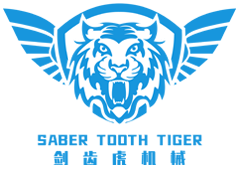25
2025
-
09
Innovative Techniques in Busbar Cutting, Bending, and Punching for Leather Manufacturers
Innovative Techniques in Busbar Cutting, Bending, and Punching for Leather Manufacturers Table of Contents 1. Introduction to Busbar Processing in Leather Manufacturing 2. Importance of Efficient Busbar Cutting, Bending, and Punching 3. Traditional Techniques in Busbar Cutting for Leather Production 4. Modern Innovations in Busbar Bending 5. Advanced Punching Techniques for Pr
Innovative Techniques in Busbar Cutting, Bending, and Punching for Leather Manufacturers
Table of Contents
- 1. Introduction to Busbar Processing in Leather Manufacturing
- 2. Importance of Efficient Busbar Cutting, Bending, and Punching
- 3. Traditional Techniques in Busbar Cutting for Leather Production
- 4. Modern Innovations in Busbar Bending
- 5. Advanced Punching Techniques for Precision Leathers
- 6. The Role of Automation in Busbar Processing
- 7. Sustainable Practices in Busbar Processing
- 8. Future Trends in Busbar Cutting, Bending, and Punching Technologies
- 9. Conclusion
- 10. FAQs
1. Introduction to Busbar Processing in Leather Manufacturing
The leather manufacturing industry has witnessed exponential growth, driven by increasing demand for high-quality products. At the core of this evolution lies the critical process of busbar cutting, bending, and punching. **Busbars**, crucial components in the assembly of leather goods, play a pivotal role in ensuring strength, durability, and aesthetic appeal. Understanding the innovative techniques in these processes not only enhances productivity but also reduces waste and operational costs.
2. Importance of Efficient Busbar Cutting, Bending, and Punching
Efficiency in busbar processing is essential for leather manufacturers aiming to stay competitive. **Effective cutting, bending, and punching techniques** directly influence production speed, material utilization, and overall quality. Implementing modern methods can lead to substantial improvements in:
- **Material yield**: Minimizing wastage through precise cutting.
- **Production speed**: Streamlining processes through automation.
- **Quality assurance**: Ensuring consistent results with advanced machinery.
The right techniques not only elevate product quality but also enhance customer satisfaction, leading to increased sales and brand loyalty.
3. Traditional Techniques in Busbar Cutting for Leather Production
Traditionally, leather manufacturers relied on manual techniques for cutting busbars. These methods, while effective, often resulted in inconsistencies and increased labor costs. Some common traditional techniques include:
- **Hand-held cutting tools**: Widely used but can lead to inaccuracies.
- **Die cutting**: A process where pre-formed dies provide a more uniform cut, yet this method is limited by the need for multiple dies for different shapes.
Manual methods require skilled labor, often leading to longer production times and increased chances of errors. Understanding these limitations has paved the way for innovation.
4. Modern Innovations in Busbar Bending
With advances in technology, modern bending methods are reshaping how leather manufacturers approach this critical task. Innovations such as **CNC (Computer Numerical Control) bending machines** offer unprecedented precision and flexibility. Key benefits include:
- **Automated control**: CNC machines can be programmed for various angles and shapes, reducing changeover time.
- **Increased precision**: Automated processes minimize human error, ensuring consistent results across batches.
- **Versatile designs**: Manufacturers can easily adapt to new design trends without significant downtime.
The shift from manual to automated bending techniques represents a significant leap forward, enabling manufacturers to keep pace with evolving market demands.
5. Advanced Punching Techniques for Precision Leathers
Punching busbars is another critical step in leather manufacturing, impacting both functionality and aesthetics. Advanced punching techniques now available in the market include:
- **Laser punching**: Utilizing high-powered lasers for intricate designs with minimal material wastage. This method allows for detailed patterns that enhance the product's visual appeal.
- **Hydraulic punching**: This technique offers high force capabilities, making it suitable for thicker materials. The precision of hydraulic systems ensures clean cuts without fraying.
Integrating advanced punching techniques can significantly improve the quality of leather products while reducing production time.
6. The Role of Automation in Busbar Processing
Automation has become a game-changer in the leather manufacturing sector. Implementing automated systems for busbar processing not only enhances precision but also allows for:
- **Reduced labor costs**: Fewer manual interventions reduce staffing requirements.
- **Increased output**: Automated systems can operate continuously, increasing production rates.
- **Data-driven decisions**: Advanced machinery equipped with monitoring systems provide valuable insights into production efficiency and quality control.
As manufacturers embrace automation, they can significantly enhance their operational capabilities.
7. Sustainable Practices in Busbar Processing
In an era of environmental consciousness, sustainable practices in leather manufacturing are paramount. Implementing eco-friendly methods in busbar processing can lead to:
- **Reduced waste**: Innovations in cutting and punching techniques reduce offcuts and scrap material.
- **Energy efficiency**: Modern machines are designed to consume less energy, contributing to lower operational costs and a smaller carbon footprint.
- **Recycling initiatives**: Using recycled materials in busbars can promote sustainability while maintaining quality.
By prioritizing sustainability, leather manufacturers can not only meet consumer expectations but also adhere to regulatory standards.
8. Future Trends in Busbar Cutting, Bending, and Punching Technologies
The future of busbar processing in leather manufacturing is poised for remarkable advancements. Emerging trends include:
- **Smart manufacturing**: The integration of IoT (Internet of Things) devices will allow for real-time monitoring and adjustments in the production process.
- **Artificial Intelligence**: AI-driven analytics can optimize cutting and bending processes by predicting inefficiencies and suggesting improvements.
- **3D printing**: As technology evolves, 3D printing might revolutionize busbar designs, enabling even more complex shapes and minimal waste.
Manufacturers who stay ahead of these trends will likely dominate the market, showcasing their commitment to innovation and quality.
9. Conclusion
The landscape of leather manufacturing is rapidly evolving, influenced by innovative techniques in busbar cutting, bending, and punching. By adopting modern technologies and sustainable practices, manufacturers can significantly enhance their production capabilities, ensuring quality products that meet consumer demands. As the industry continues to innovate, those who embrace these changes will lead the way, setting new standards for excellence in leather goods.
10. FAQs
What is the importance of busbar processing in leather manufacturing?
Busbar processing is crucial as it ensures the structural integrity and quality of leather products, affecting both functionality and aesthetics.
How do modern bending techniques differ from traditional methods?
Modern bending techniques, particularly CNC machines, offer greater precision and efficiency compared to traditional manual methods, reducing labor costs and production times.
What role does automation play in busbar cutting and punching?
Automation increases production rates, reduces labor costs, and enhances precision through the use of advanced machinery that minimizes human error.
Are there sustainable practices in busbar processing?
Yes, sustainable practices include reducing waste through precise cutting, using energy-efficient machines, and implementing recycling initiatives.
What trends should leather manufacturers watch for in the future?
Manufacturers should focus on smart manufacturing, AI analytics, and the potential of 3D printing, which can revolutionize design and production processes.
Related news





